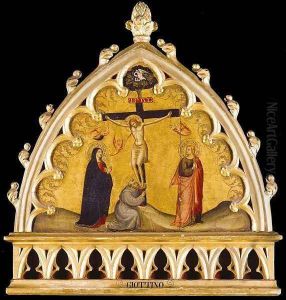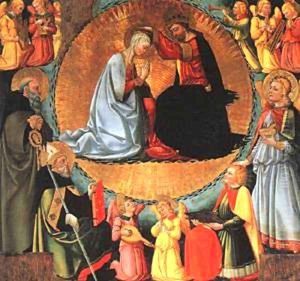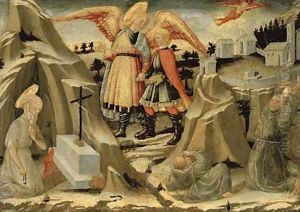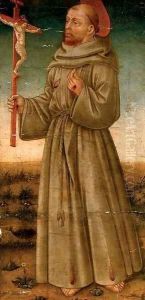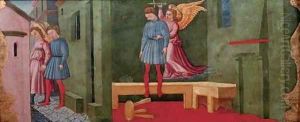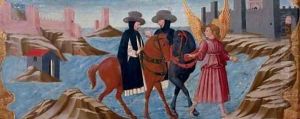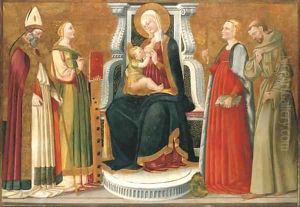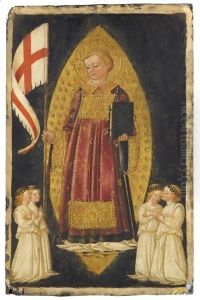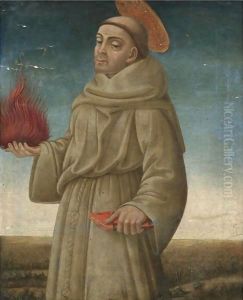Nero di Bicci Paintings
Nero di Bicci was a notable Italian painter of the Renaissance period, born in Florence, Italy, in 1419. He was a third-generation artist in his family, following in the footsteps of his father, Bicci di Lorenzo, and grandfather, Lorenzo di Bicci, both of whom were painters as well. The continuity of his family's artistic tradition is a reflection of the workshop system that was prevalent during the Renaissance, where artistic skills and commissions were often passed down through generations.
Nero's work is characterized by its adherence to the Florentine tradition of painting, which was marked by an emphasis on detailed figures and a clear, bright palette. He was active during a transitional period in art history, and his paintings exhibit elements of the late Gothic style with hints of the emerging Renaissance humanism. Despite this, Nero's style did not fully embrace the innovative techniques and the humanistic themes that were being developed by contemporaries such as Fra Angelico and Masaccio.
His career was largely spent working on commissions for various churches and confraternities in Florence and its surrounding areas. One of his most significant works is the 'Madonna and Child Enthroned', which was completed for the Church of San Sisto in Florence. Nero di Bicci was also responsible for a number of frescoes and altarpieces, many of which have been well preserved and can still be seen today.
Nero di Bicci documented his professional life meticulously in his 'Ricordanze', a journal where he kept records of his commissions, financial transactions, and other aspects of his workshop's operation from 1453 to 1475. This document provides valuable insights into the working life of a Renaissance artist and the art market of the time.
He continued to paint and contribute to the artistic landscape of Florence until his death in 1491. Although Nero di Bicci may not be as widely recognized as the foremost masters of the Italian Renaissance, his body of work remains a testament to the enduring legacy of the Florentine artistic tradition and provides a rich source of information on the period's artistic production and practices.
